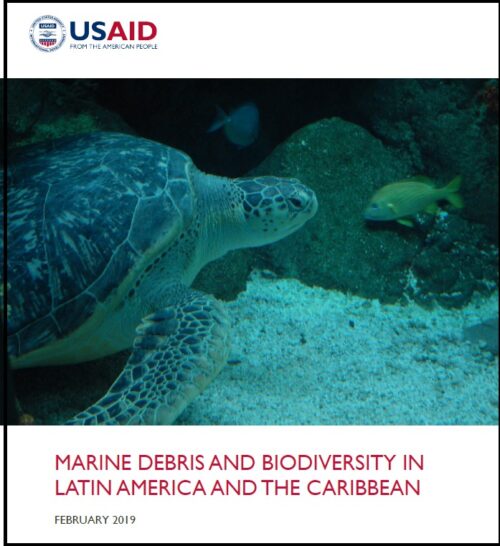Understanding the Ocean Pollution Problem in Latin America & the Caribbean

Did you know plastic is the number one type of pollution in the waters of Latin America and the Caribbean? And that most of the plastic in the water comes from land-based sources? A recently published USAID white paper found that plastic pollution problem is growing at an exponential rate and it is having negative impacts on marine life and biodiversity in the region. The research identified four main factors contributing to the increasing levels of marine debris in the Latin America and the Caribbean (LAC). They include:
- Population growth, urbanization, and increasing tourism
- Increasing demand for and production of plastic products
- Climate change
- Poor governance, including weak land use planning, regulation and enforcement; poor municipal waste management; and poor fisheries and aquaculture management
USAID funded a compilation of information and research through its Global Environmental Management Support Program to explore the impact of marine debris on biodiversity in Latin America and the Caribbean. The Cadmus Group LLC conducted the research looking across the region and focused on Colombia, the Dominican Republic, El Salvador, Grenada, Guatemala, Haiti, Honduras, Jamaica, Nicaragua, Peru, and St. Vincent and the Grenadines.
The key findings from the research include:
- Plastic is by far the most prevalent and impactful type of marine debris, due to exponential increases in plastic production and its persistence in the environment.
- All known species of sea turtles, about half of all species of marine mammals, and one-fifth of all species of sea birds are affected by entanglement or ingestion of plastic marine debris.
- Most marine debris originates from land-based sources and enters oceans via waterways.
- Once in the ocean, marine debris accumulates in certain areas based on currents, winds and gyres. Climate change will impact transportation dynamics.
- Latin America and the Caribbean are facing a growing challenge in marine debris, mainly due to poor waste management in the region.
- At the macro-level, marine debris is a nuisance that negatively impacts tourism, recreation, fisheries and industry, thereby creating indirect economic consequences.
- At the micro-level, biodiversity is impacted in various ways when ecosystems and species interact with marine debris via ingestion, entanglement, contamination, and transport of invasive species
The white paper provides a background of the issue of marine debris and describes the extent of marine debris and its impact on high biodiversity areas in the LAC region. The research presented shows the country-specific impacts of marine debris, compares the impacts of marine debris threats/stressors to biodiversity in the region, and sheds light on existing strategies, policies and plans for addressing marine debris threats.
Despite a growing body of evidence regarding the impacts of marine debris on organisms and key ecosystems, the study of marine debris is a relatively new field and important data gaps exist, including:
- Few country-specific studies on marine debris for this paper’s targeted countries
- Few studies linking marine debris impacts and biodiversity
- Limited studies on habitat-level impacts of marine debris
- Lack of studies on population-level impacts of marine debris
- Limited characterization of marine debris pollution in targeted countries
- Invasive species transported by plastics is understudied.
Despite the data gaps, the sustained production of plastics, weak waste management infrastructure in the Latin America and the Caribbean region, and existing evidence on negative impacts to biodiversity highlight an urgent case for greater action on addressing marine debris.
This white paper provides a background of the issue of marine debris and describes the extent of marine debris and its impact on high biodiversity areas in the LAC region. The research presented shows the country-specific impacts of marine debris, compares the impacts of marine debris threats/stressors to biodiversity in the region, and sheds light on existing strategies, policies and plans for addressing marine debris threats.
Learn more about USAID’s work to combat ocean plastic pollution

